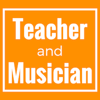In Music in Schools: Promoting Good Practice, Ofsted published a guide for observing music lessons....
How can we make classical music accessible to young people today?
 This post was originally published on Innovate My School and was written on behalf of Sinfini for Schools. It is reblogged here with permission.
This post was originally published on Innovate My School and was written on behalf of Sinfini for Schools. It is reblogged here with permission.
The annual BBC Proms season is now underway, an eight week celebration of music concerts, talks, workshops, family events and more. This year to mark the opening pupils from four primary schools have been invited to take part in two Proms concerts at the Royal Albert Hall, celebrating the first year of BBC Ten Pieces.
Since Ten Pieces launched last October, children in primary schools across the UK have been working on their own creative responses to music by Beethoven, Britten, Mozart, Mussorgsky and others, with the help of BBC ensembles. This got me thinking about how we sustain this interest once young people reach secondary school. What approaches in the music classroom will encourage older students to increase their enjoyment of classical music and, of course, the wider musical repertoire?
I’ve pulled together some key teaching tips for to keep top of mind:
Select repertoire that students like and can identify with
When it comes to performing less familiar pieces, find a starting point that your students can be passionate about to the extent that they choose to broaden their musical horizons and trust the teacher’s judgement. Celebrate their musical tastes and put this into the context of the more classical traditions like the Proms and opera. Let them see that audience participation is not limited to the modern music festivals of today but a great part of our musical history.
Embrace a practical approach to music education
As music teachers we should seek to engage students in making music of all types, including classical music. Music lessons need not be limited to listening activities and ‘music appreciation’. Introduce your students to all the instruments you can find and allow them to improvise and figure out how to play it themselves.
Try classroom workshopping
The beauty of an approach such as classroom workshopping (as advocated by Musical Futures) lies in the fact that the material itself is of less importance than the method of teaching. Working as a whole class to learn how to play Ravel’s ‘Bolero’ becomes just as accessible as learning to play Pharrell’s ‘Happy’. If students are actively engaged in the process of performing music, then they will quickly see the benefit of focused listening in order to better play their part.
Anyone who has ever taken part in ensemble music making will surely be able to tell you just how transformative an experience it can be. Performing as part of a large group is great fun. Singing Bizet’s ‘Toreador’s Song’ alongside twenty of your peers will give you the same buzz as singing ‘Hey Jude’. It’s not the repertoire, style or genre that counts, it’s the very act of creating something new.
Make it digital
Students today are growing up in a digital era so the music classroom should reflect this. Film is a great way to engage students with the process of creating and using music for dramatic effect. Equally, podcasting is useful to get students evaluating their own progress and performances and sharing them with each other online.
